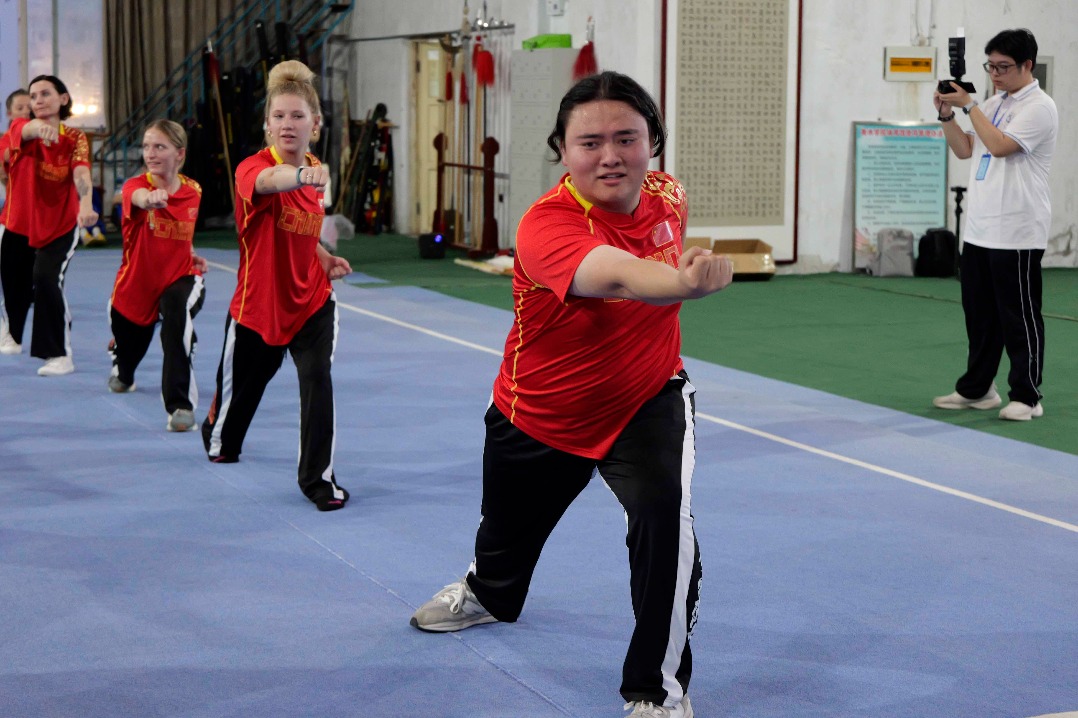Hong Kong can't afford to let down its guard on COVID curbs


Singapore recently announced the easing of anti-COVID-19 restrictions in a move widely viewed as shifting to "living with the virus". The news has given rise a new round of debate over Hong Kong's anti-pandemic strategy among local residents who have showed signs of COVID restriction fatigue.
However, the Hong Kong Special Administrative Region is far from ready to follow suit, even if "losing out" to Singapore is a legitimate concern.
While a sense of urgency to catch up with Hong Kong's longstanding competitor is welcome, the timing and actual situation must be taken into consideration before rolling out initiatives that concern Hong Kong's future.
In this case, inopportune timing in changing Hong Kong's anti-COVID-19 strategy would be a misstep that could bring a huge cost to Hong Kong society. A comparison with the actual situations of Singapore and Hong Kong can explain why Hong Kong cannot afford to relax its curbs on the virus yet.
The vast majority of Singapore's population has been fully vaccinated, and nearly everyone eligible to receive the booster shot has done so. Herd immunity is also taking root, as many of the infected patients have recovered. These favorable conditions afford Singapore the confidence to take its latest move to relax its anti-coronavirus restrictions.
While Hong Kong is catching up with its vaccination rates-90 percent of the city's population have received the first inoculation, 80 percent have received the second vaccine dose and 20 percent the booster shot-the data regarding the elderly and the young population is much less reassuring. Only 69 percent of those age 70 and above, and 11 percent of children age 3 to 11, have been given a second dose, and the proportion of those who have received the booster is miserably lower.
Siddharth Sridhar, a clinical assistant professor at the University of Hong Kong, compared the pandemic outbreaks in Hong Kong with places such as Singapore, South Korea, the United Kingdom, the United States, Denmark and New Zealand, concluding that Hong Kong has the highest death rate recently. He chiefly blamed the city's overwhelmed healthcare system, the low vaccination rate among the elderly, and the low rate of previous infection, while some other experts have also cited defects in data collection.
Meanwhile, medical experts have discovered that the absolute number of deaths caused by the Omicron variant of the coronavirus is not much lower than that of the Delta variant, because its extreme contagiousness has victimized a much bigger portion of the city's population.
These findings suggest that herd immunity is out of reach for Hong Kong at this point. Prematurely easing anti-pandemic restrictions will put more lives at stake. The Omicron-induced fifth wave has already cost more than 7,000 precious lives in Hong Kong, and no one can foresee when the number will peak. Hong Kong society simply cannot afford to bet against the odds with human lives.
The number of daily local infections in Singapore peaked at 26,000 on Feb 22, then gradually dropped. When announcing the latest move to ease COVID-19 curbs, Singapore Prime Minister Lee Hsien Loong highlighted the resilience of the country's medical system, which had survived considerable stress at the height of the Omicron outbreak.
Omicron continues to exert a heavy burden on Singapore's healthcare system, but the pressure has eased. Singapore's medical system showed no signs of being overstretched during the crest of outbreaks. Hong Kong's medical system is simply no match for Singapore's in terms of resilience amid daunting demand for medical services.
The fifth wave of outbreaks has exposed at least three weaknesses of Hong Kong's medical system. The first is its insufficient capacity to deal with a sudden surge in demand. The system struggled to cope with demand when daily infections exceeded 10,000, and was quickly overwhelmed after daily cases climbed above 50,000. The second pitfall is the lack of effective coordination between the public and private medical sectors. Private hospitals failed to take over the excessive demand for services when public hospitals were overwhelmed, resulting in delayed treatment and worsening health conditions that caused the death of many patients. The third shortcoming is the inadequate provision of medical care for homes for the elderly, whose residents are the most vulnerable to the virus.
Fortunately, the mainland has Hong Kong's back. At the SAR government's request, the central authorities provided seamless coordination among various departments. In addition, several groups of mainland medical experts were sent to Hong Kong to offer valuable advice, followed by the arrival of medical crews to assist in helping patients. At the same time, makeshift hospitals were built by mainland contractors to deliver more than 20,000 additional beds, and the mainland sent a team of Chinese medical specialists upon Hong Kong's request.
However, despite the abundant aid from the mainland, it would be a grave mistake to assume that mainland medical staff and resources would take up any shortfall in Hong Kong's capacity, and thus to rashly relax anti-COVID-19 restrictions. Not only would the mainland's support efforts go down the drain if Hong Kong discarded the "dynamic zero infection" strategy, but it would also send a chilling message to these angels in white who came to the rescue of Hong Kong.
Moreover, the crowded living space in Hong Kong is more conducive to the spread of the virus, whereas Singapore's people have a much more spacious living environment, which allows them to more easily practice necessary social distancing.
Meanwhile, Hong Kong, as a modern Chinese metropolis, is characterized by its strong connection with the world together with its inextricable ties with the mainland. These ties include Hong Kong's heavy dependence on the mainland's supply of food and daily necessities and the frequent personnel exchanges between the two sides.
If Hong Kong were to prematurely and significantly relax its anti-pandemic regimen while the mainland adheres to the "dynamic zero infection" strategy, there would be little hope of resuming quarantine-free travel between the two areas soon, and this would bode poorly for the local economy. Singapore does not have such concerns.
The author is a Hong Kong member of the National Committee of the Chinese People's Political Consultative Conference and chairman of the Hong Kong New Era Development Thinktank. The views do not necessarily reflect those of China Daily.
- China launches nationwide crackdown on misconduct in medical sector
- Blood donation rate rises, shortages remain
- Typhoon Wutip spurs emergency response
- China's BMI tech reaches new heights
- Gambian farmer pays tribute to 'father of hybrid rice'
- China enhances coastal ecosystem protection and restoration





































